Have you ever considered getting dairy goats for your homestead? Learn more about the advantages and disadvantages of raising dairy goats, and along the way discover which of the dairy goat breeds is best for your homestead.
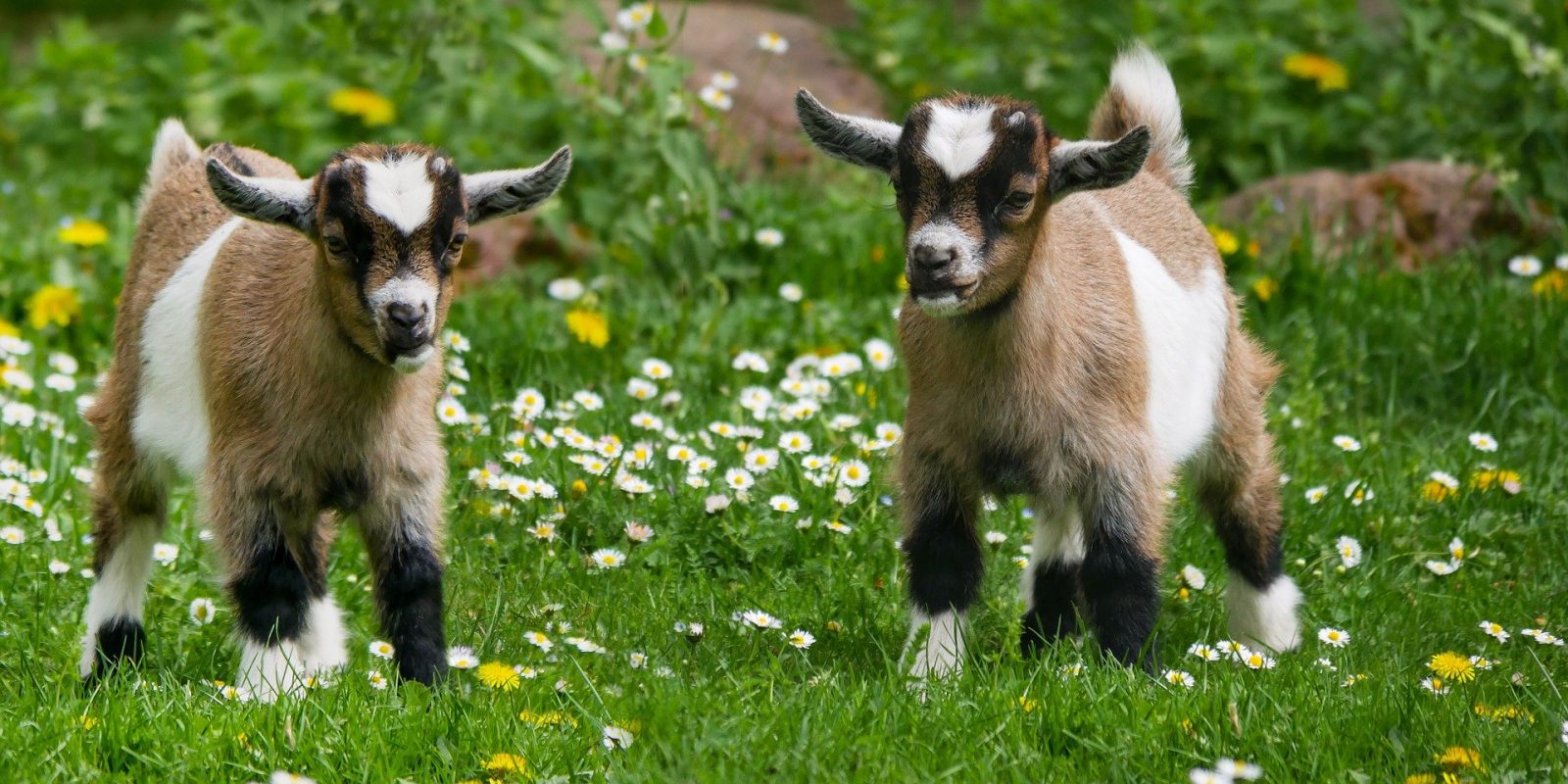
Is a dairy goat right for your homestead? As always, there are many factors to consider when bringing on a new type of livestock to your homestead. Let’s take a closer look at dairy goats and what they have to offer to homesteaders.
Advantages of Dairy Goats
1. Less Space
If you have ever longed for a dairy cow but do not have a large homestead, dairy goats would be a wonderful alternative to consider. Dairy cows require a lot more pasture and feed than dairy goats.
Owning a dairy goat would give you the opportunity to produce your own dairy products without the space and feed requirements of a dairy cow.
2. Less Milk
Dairy cows produce a lot of milk, so much so that often times people get overwhelmed by the volume of milk that comes their way everyday.
The production level of dairy goats varies significantly depending on the breed, but you can expect anywhere from about a quart to just over one gallon of milk a day from dairy goats.
This amount of milk is much easier to keep up with. Depending on how large your family is, it may be just the right amount for you to drink each day, and there may be a little left over to make cheese or other dairy products.
3. Easier to Digest
Many people who struggle to digest cow milk find that they are able to drink goat milk without any problems.
This comes down to the milk composition of cow milk versus goat milk. I went into a lot more detail on this topic in this post: A2/A2 Milk- What’s the big deal? (And How to Test YOUR Family Milk Cow)
If you are not able to drink cow milk, it is possible that goat milk could be an option for you. And the best way to get fresh goat milk is to get your own dairy goat!
4. Goats in the City
You can’t keep a cow in the city, but it could be possible for you to have a dairy goat. If that is something you are interested in, check with your local city or county regulations to find out if goats are allowed where you live.
Having a dairy goat would be a wonderful way to bring a little bit of country to the city.
Disadvantages of Dairy Goats
1. Fencing
Goats are notorious for escaping from their paddocks and enclosures. It is important to ensure that you have a good fencing system and that you can keep your goats where they belong.
2. Multiple Goats
Goats are herd animals and you cannot have just one goat. If you choose to get dairy goats, plan to have at least two goats.
3. Off Flavored Milk
Some people dislike goat milk because it can taste “goaty.” While this can be the case, there are ways to prevent that musky goat flavor in goat milk.
The most important thing is to keep bucks (intact males) away from does (females) who are in milk. Bucks are notorious for having an awful smell, and this smell can affect the flavor of the milk.
Goat breeds that have a higher butterfat milk composition produce milk that tastes sweeter and therefore tends to not have an off flavor.
And finally, ensuring that you are using proper milking and milk handling techniques will help prevent poor tasting milk.
4. Parasites and Foot Rot
While this is not an issue that is particular to just goats, it is something that is far more common in goats. It is very important to research, find a mentor, and fully understand how parasites affect goats and how to properly manage them so that you do not end up with 1. goats with a high parasite load, and 2. do not end up with goats who are full of parasites that are resistant to treatment. It is a delicate balance to keep.
Goats are also prone to foot rot, so knowing how to take care of their feet, especially in the springtime when everything is wet, is very important.
Best Dairy Goat Breeds for Your Homestead
1. Alpine
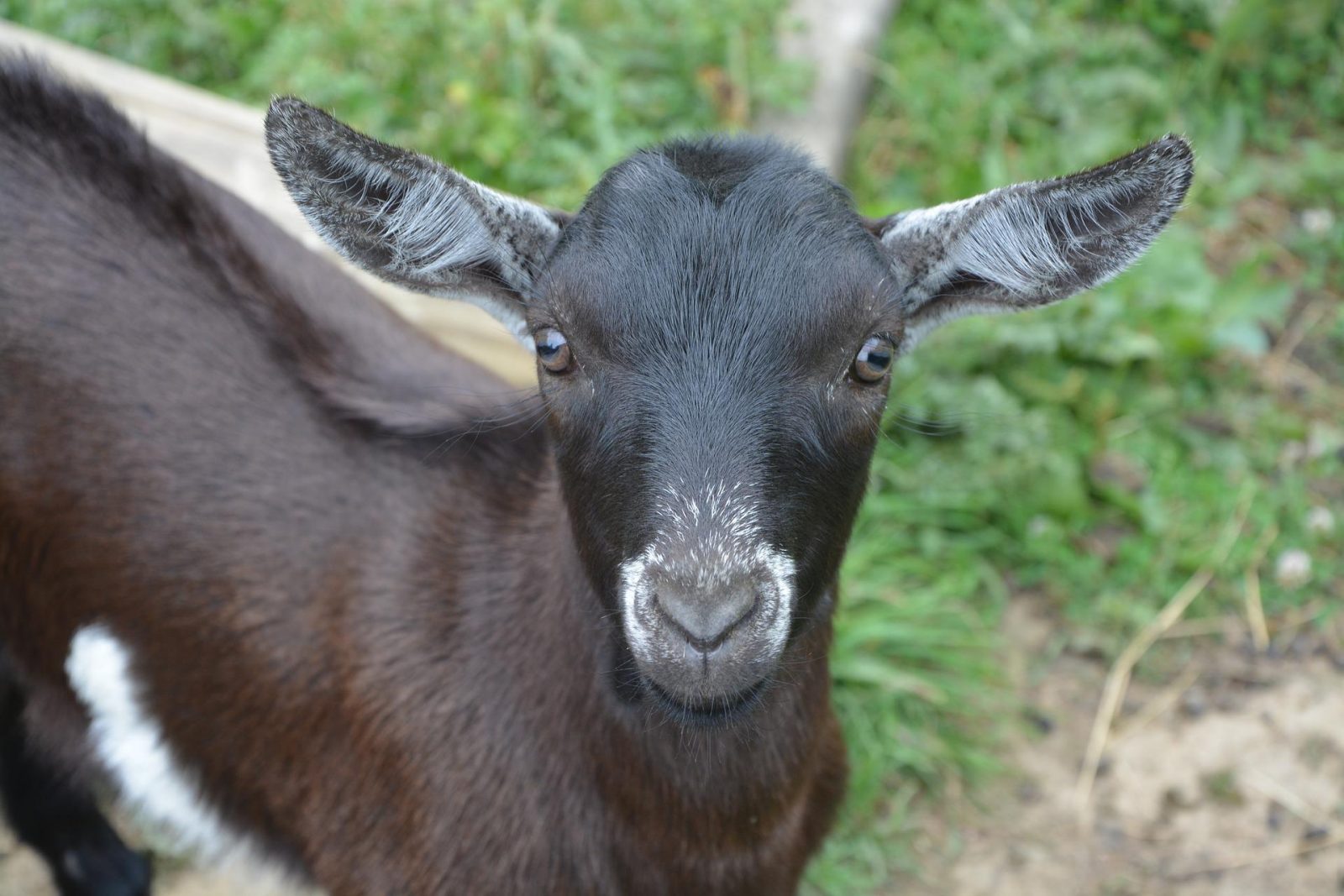
Breed Characteristics: Alpines are a large dairy goat breed that produce the highest volume of milk. They have a straight nose and erect ears and come in a variety of colors.
Does should be at least 30 inches tall and weigh at least 135 pounds.
Originally bred in the French Alps, it is a hardy breed that is adaptable to many different climates. They are the highest producing breed, though their milk contains less butterfat and protein compared to other breeds.
Temperament: Friendly and curious, but also independent and strong willed
Average Milk Production: 2,700 pounds
Average Butterfat: 3.3%
Average Protein: 2.9%
2. LaMancha
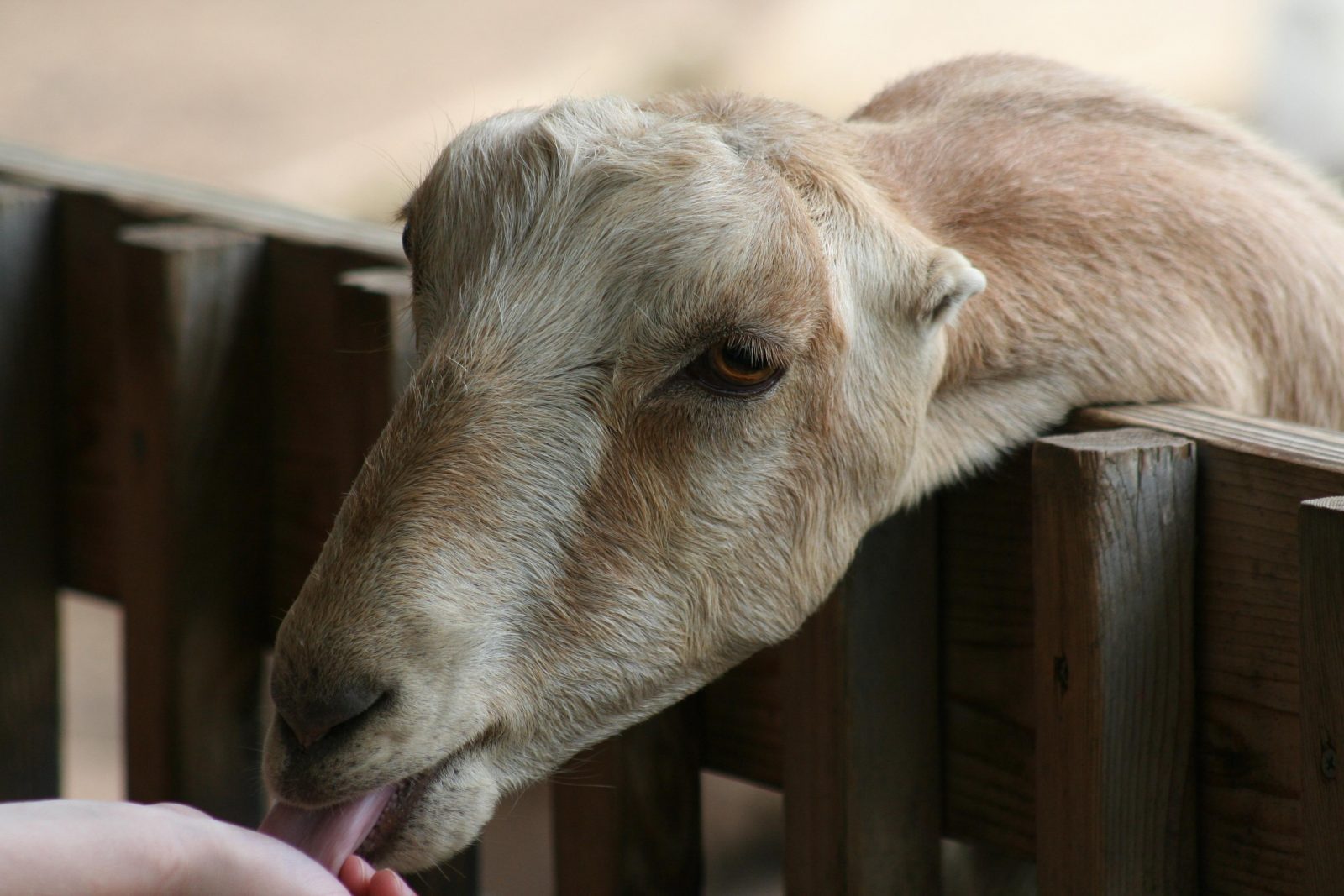
Breed Characteristics: LaManchas are slightly smaller than Alpines, with does that are at least 28 inches tall and weigh at least 130 pounds.
They have straight noses and come in a variety of colors. One of the signature characteristics of LaManchas are their small, almost nonexistent ears.
LaManchas were developed in the United States and are adaptable to a variety of climates. Their milk composition contains a slightly higher average of butterfat and protein compared to most of the other large breeds.
Temperament: Good tempered and calm
Average Milk Production: 2,300 pounds
Average Butterfat: 3.7%
Average Protein: 3.2%
3. Nigerian Dwarf
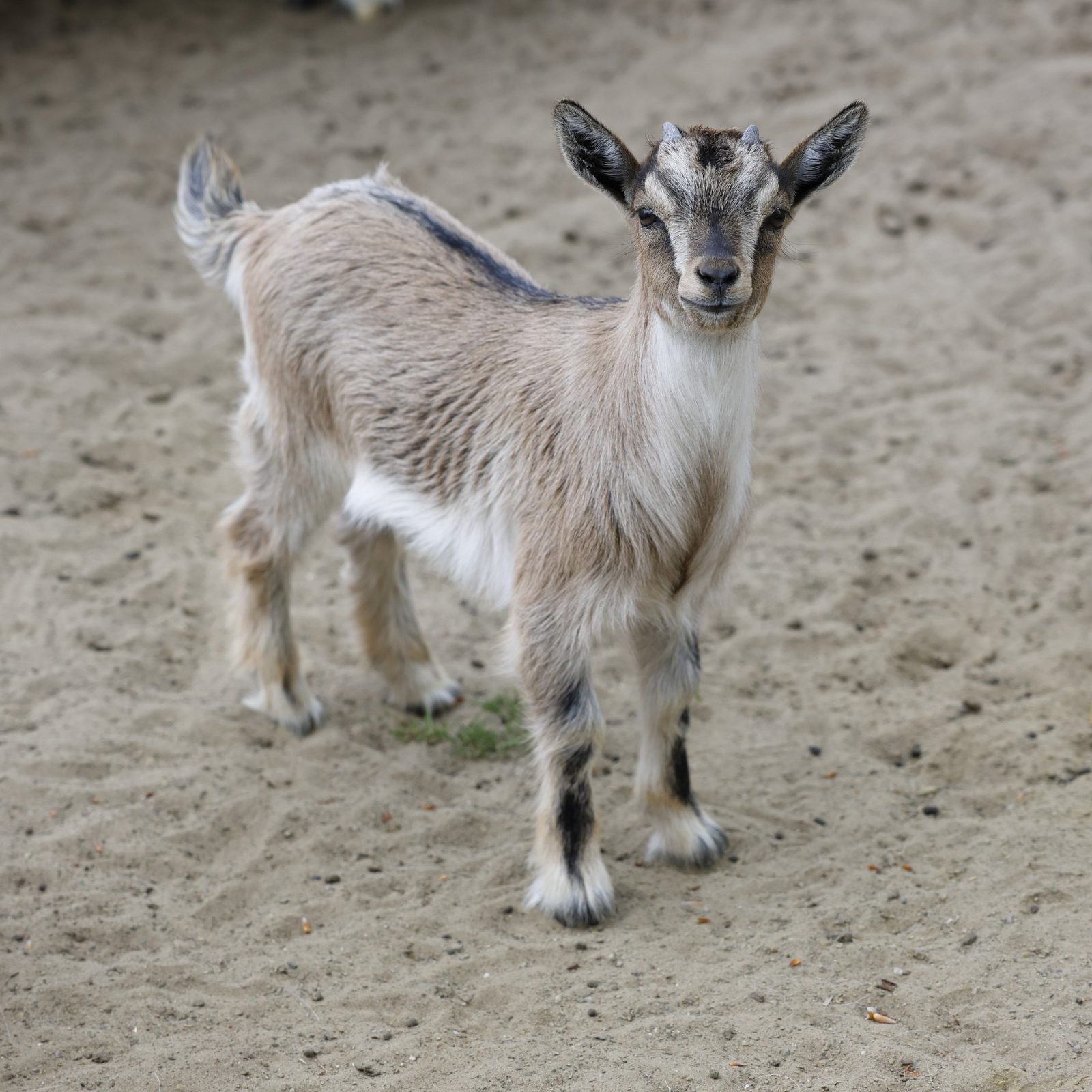
Breed Characteristics: Nigerian Dwarfs are the only miniature dairy goat breed to be registered with the American Dairy Goat Association. Does are between 17 and 22.5 inches with an average weight of 75 pounds.
They come in a variety of colors and have medium erect ears and a nose that is either straight or dished.
Nigerian Dwarfs were developed in the United States, and though small, they produce a lot of milk for their size. Their milk is notable for its high butterfat and protein content- higher than any other dairy goat breed.
Temperament: Gregarious and friendly
Average Milk Production: 800 pounds
Average Butterfat: 6.4%
Average Protein: 4.4%
4. Nubian
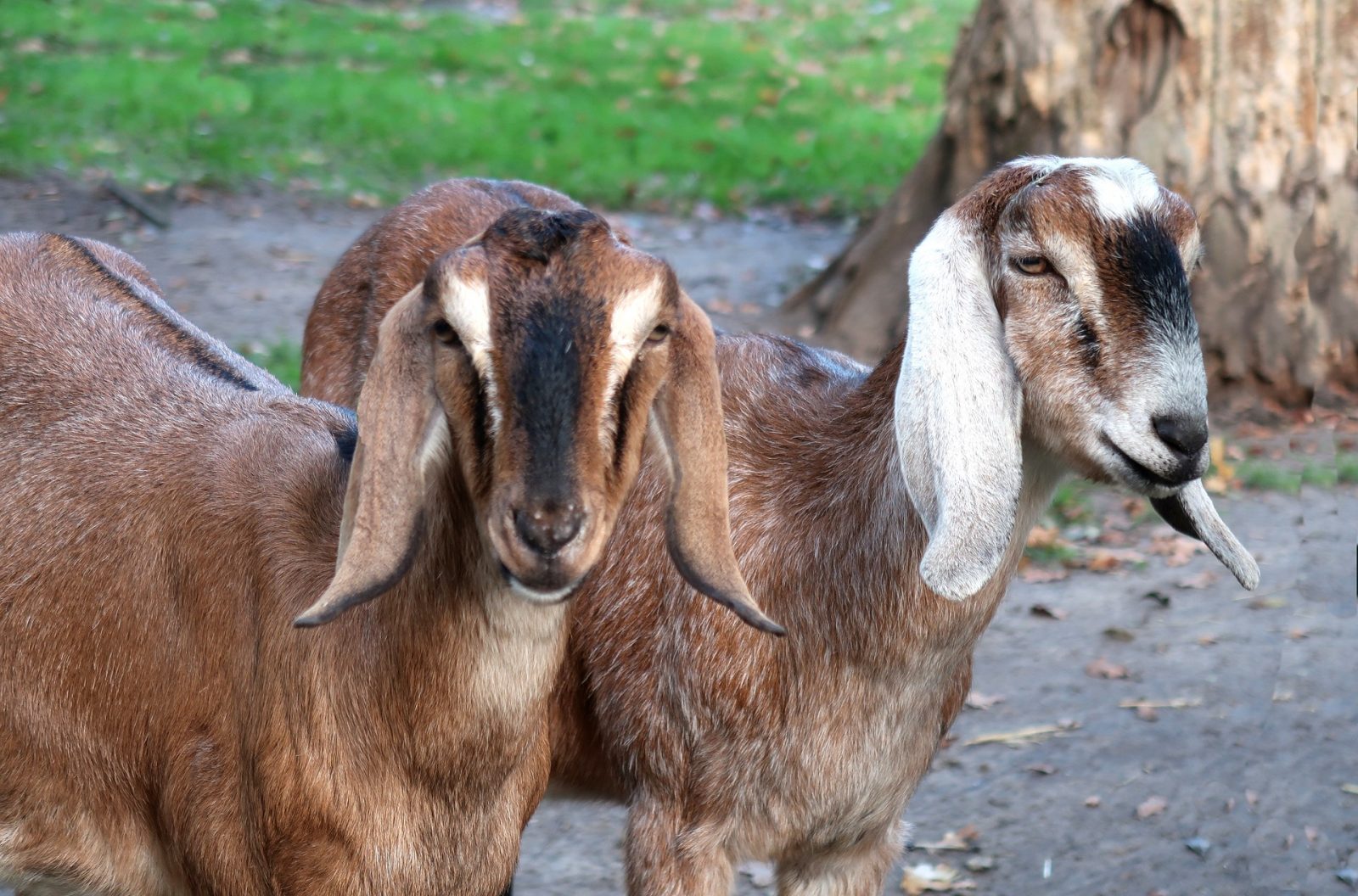
Breed Characteristics: Nubians are one of the most easily recognizable dairy goat breeds, with their Roman noses and long floppy ears.
Does are at least 30 inches tall and weight at least 135 pounds. While officially a dairy breed, some recognize Nubians as a dual purpose breed due to its “beefier” body type.
Nubians are a popular breed that is known for milk that contains a high butterfat and protein percentage- the highest of the large breeds. They are also known to be one of the more vocal breeds.
Temperament: Sociable and loud
Average Milk Production: 2,000 pounds
Average Butterfat: 4.9%
Average Protein: 3.8%
5. Oberhasli
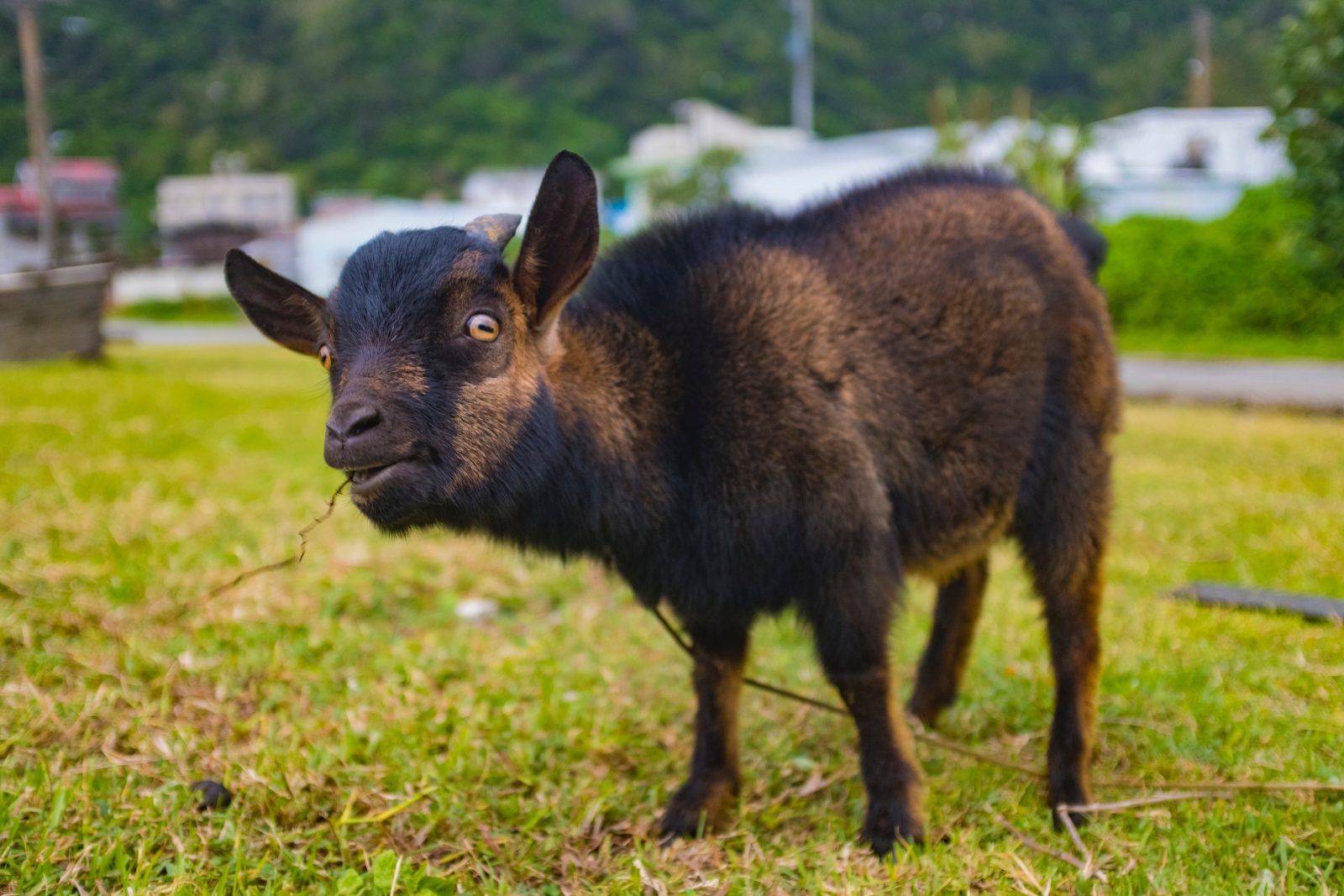
Breed Characteristics: Oberhasli are a bay colored breed with does that are at least 28 inches tall and weight at least 120 pounds. They have short erect ears and their nose is either straight or dished.
Oberhasli are a calm breed and are rather noble in the way they carry themselves.
Temperament: Friendly, quiet
Average Milk Production: 2,000 pounds
Average Butterfat: 3.7%
Average Protein: 3.0%
6. Saanen
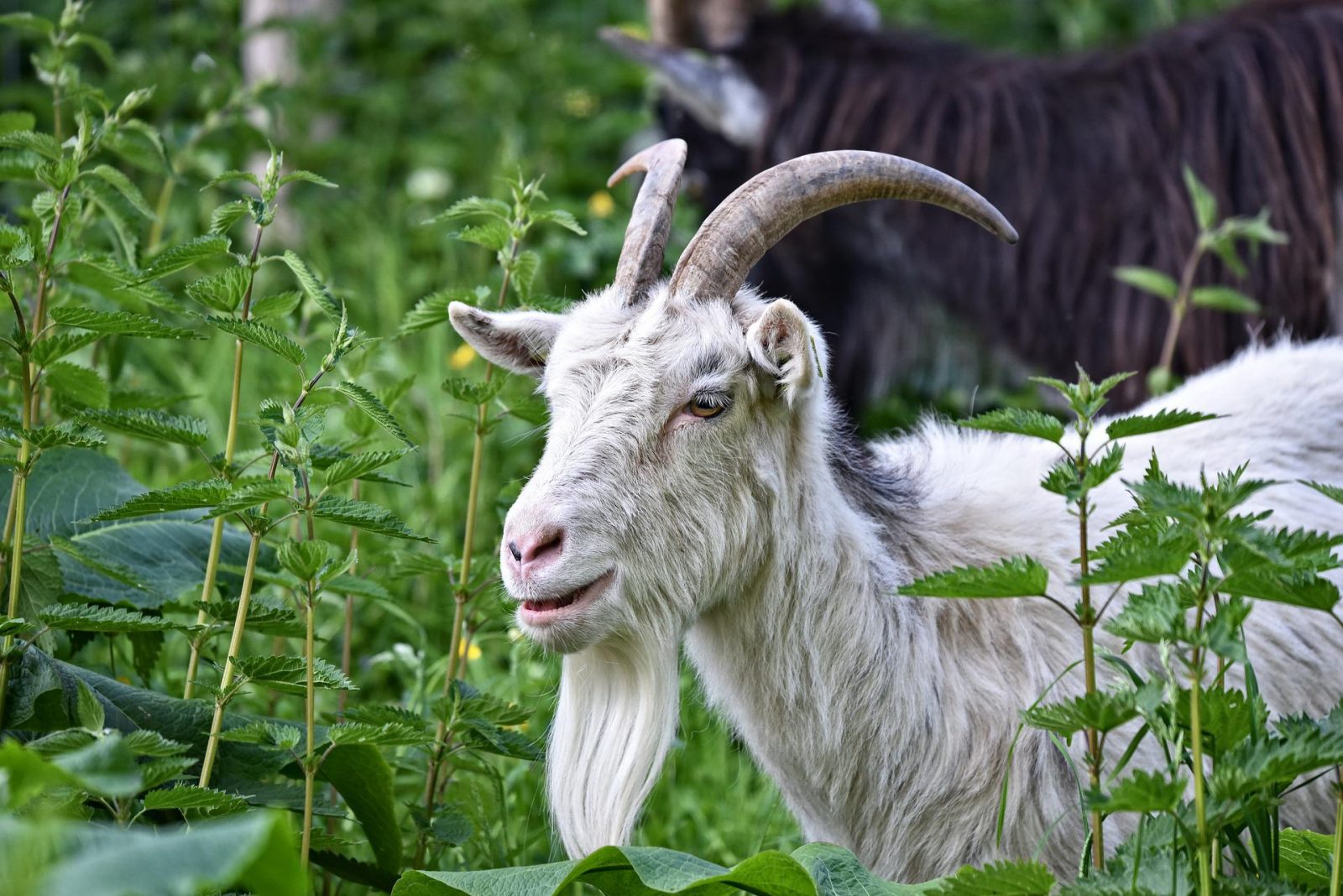
Breed Characteristics: Saanens have a solid white or cream colored coat. Does are at least 30 inches tall and weigh at least 135 pounds.
They have either straight or dished noses and erect ears.
Saanen have a high milk production level that competes with the Alpine breed, and therefore are popular for commercial operations.
Temperament: Calm and friendly
Average Milk Production: 2,700 pounds
Average Butterfat: 3.3%
Average Protein: 2.9%
7. Sable
Breed Characteristics: Sables have many similar characteristics to Saanens, in fact they are essentially colored Saanens. They have erect ears and either straight or dished noses. Does are at least 30 inches tall and weigh at least 135 pounds.
Sables may be any color except all white or all cream colored.
Temperament: Gentle, calm
Average Milk Production: 2,400 pounds
Average Butterfat: 3.3%
Average Protein: 2.9%
8. Toggenburg
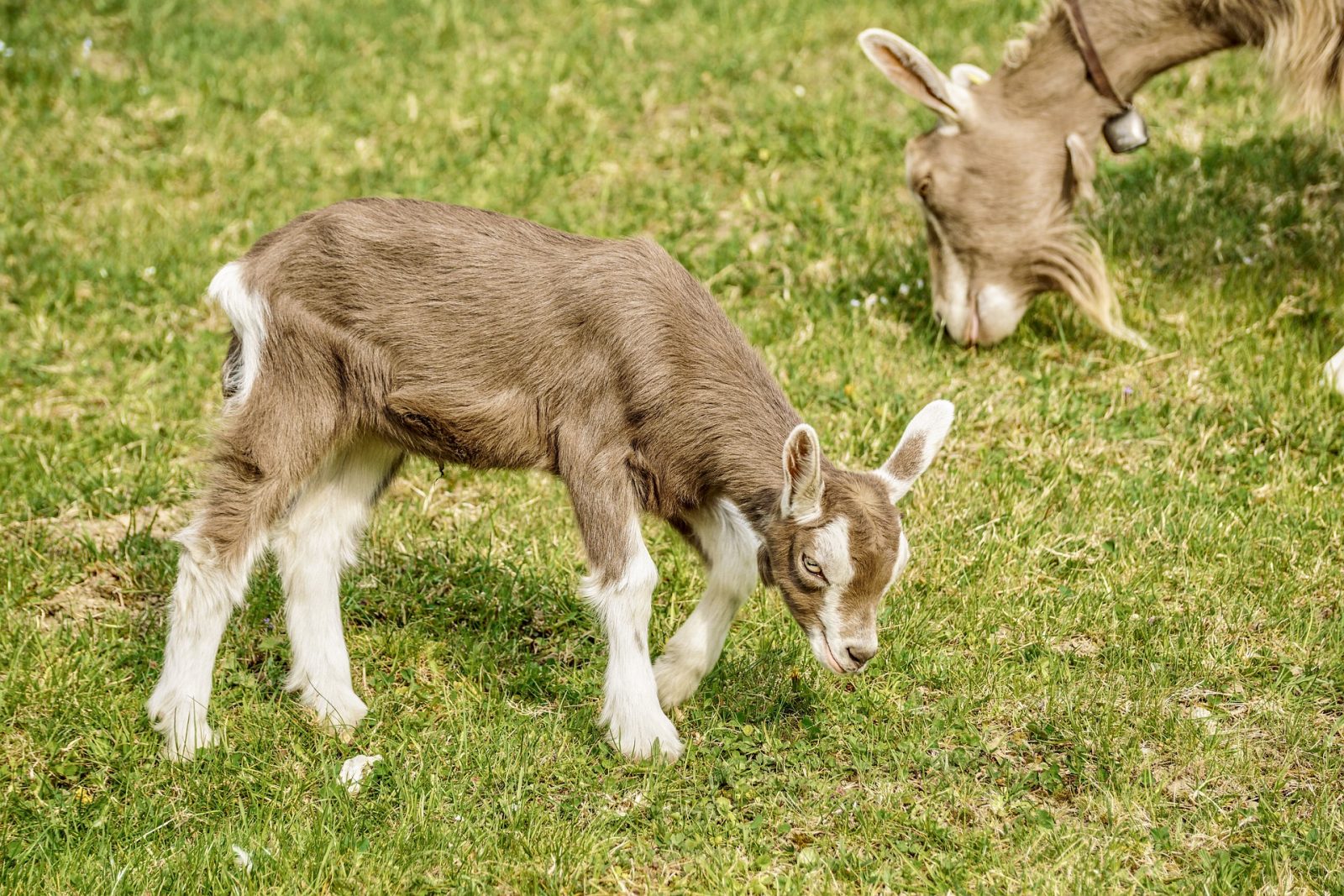
Breed Characteristics: Toggenburgs are a Swiss breed that was among the first dairy goats to be imported to the United States. Does are at least 26 inches tall and weigh at least 150 pounds.
They range in color from a light fawn to chocolate color with some white or cream markings. Their ears are erect and they have a straight or dished nose.
They are an active and alert breed.
Temperament: Lively and curious
Average Milk Production: 2,200 pounds
Average Butterfat: 3.1%
Average Protein: 2.9%
Considering Your Options
Each goat breed offers unique strengths and characteristics. And while there is not a perfect goat breed, it is important to recognize what your goals are for producing goat milk. That is ultimately what will help you figure out what is the best dairy goat breed for you.
If you are interested in getting into commercial goat milk production, or if your family consumes a lot of milk everyday, it would be worth considering one of the higher volume producers.
On the other hand, if you are more interested in making cheese, then you will need to choose a breed that produces milk with a higher buttermilk and protein content.
Taste preferences and sensitive stomachs are another factor to consider. If you prefer your goat milk to taste more similar to cow milk, then look for a breed that has a higher butterfat content.
What is also worth considering, if you have a stomach that is sensitive to dairy, then sometimes even with goat milk, it can be difficult to digest the milk from the higher butterfat breeds. In this case, it could be worth looking for a breed that has a butterfat content that is on the lower end of the scale.
Some dairy goat breeds are much louder than other breeds. This is something to think about if you live near other people.
And finally, when selecting a dairy breed, look and see what is in your area. It is best to avoid the sale barn and instead look for reputable breeders in your area who can help you get started with a solid herd of dairy goats.
Do you have dairy goats, or are you considering getting dairy goats? What breed are you most drawn to? Share your thoughts in the comments below!
See Also: Dairy Cow Breeds: Which One is Best for Your Homestead?
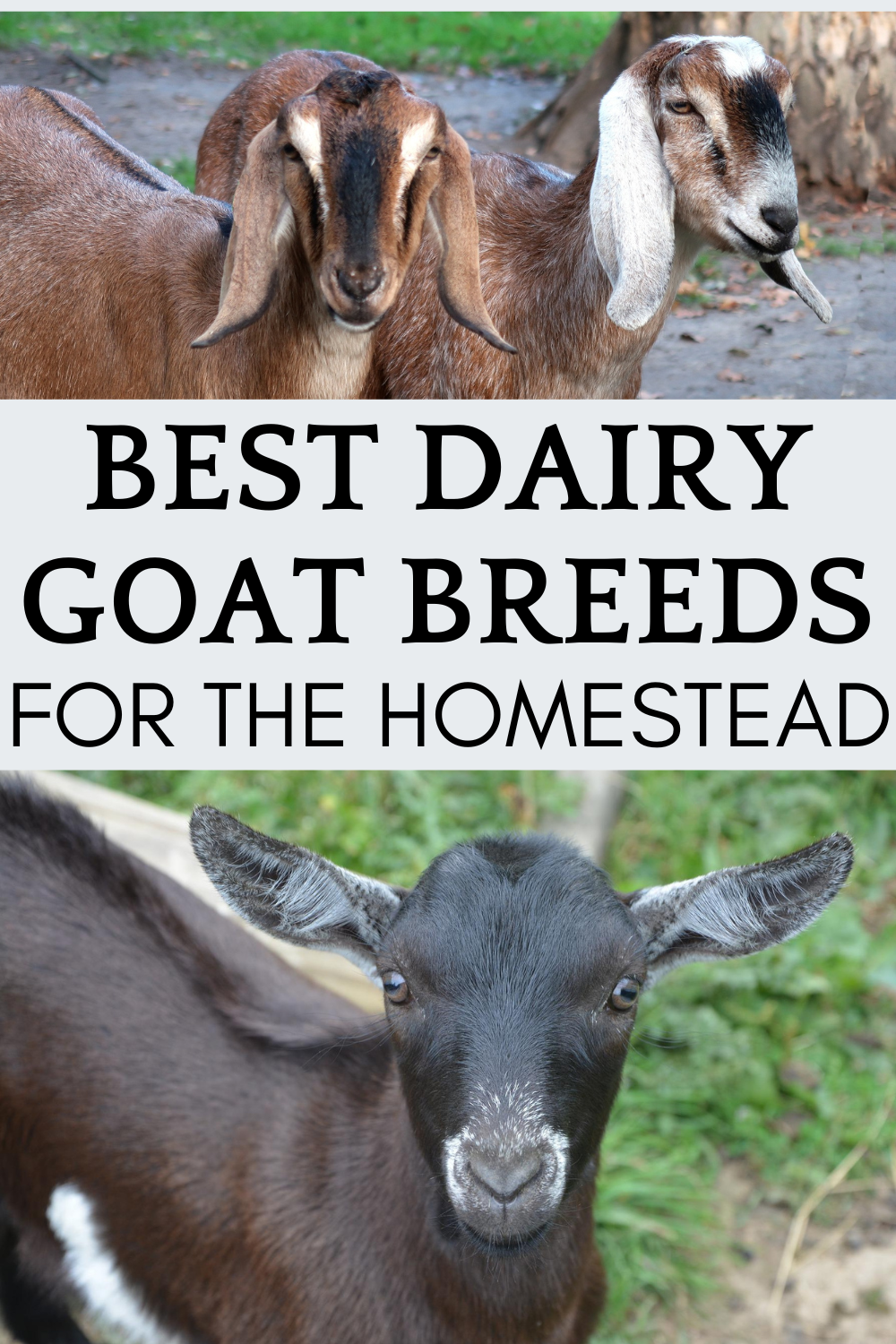

Wow, this is such a great resource! Thank you so much for putting it together.
I am glad it was helpful!
What a great resource. Thanks for sharing! The goats are so cute!
They are cute, aren’t they?!
Loved hearing about the different breeds of goats. I think you know what would make even the cutest goat even cuter.
Yes, we all know what would make the cutest goat even cuter!
Fascinating information and really appreciate your work on getting this research out. Makes it easier to decide.
It can be really hard to decide what is right for your homestead. I am glad this was helpful to you.
Thank you for breaking down the different breeds! This is super helpful
You’re welcome!
So many options here! I figure we’ll go with Nigerian Dwarf and/or Nubians when we decide to get goats. I’m hoping the milk will be better for my lactose intolerance, but I’m not keen on musky milk! Thanks for the helpful information!
Those are both great breeds! We are planning to get Nubians this fall.
This is really helpful, thank you!
I absolutely love my mini nubians. They are super sweet and very loud. Especially when we don’t bring their feed when they want it
Mini nubians! They sound like they are adorable!
Great post! The goats are SO cute!
Thank you! I have to agree that they are super cute.